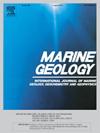The tsunami history and prehistory of Nuʻu Refuge, Maui, Hawaiʻi
IF 2.2
3区 地球科学
Q2 GEOSCIENCES, MULTIDISCIPLINARY
引用次数: 0
Abstract
In the 21st century tsunamis have claimed the lives of at least 253,000 people globally, making them one of the deadliest natural disasters. In Hawai'i, destructive events occur, on average, every 11 years. This study takes a multi-proxy approach to understand the magnitude and frequency of tsunamis at the Nuʻu Refuge, Kaupō, Maui, Hawai'i. Research there revealed sedimentary evidence of four tsunami or storm events dating from as early as 1837 CE from both local and distant sources. Sedimentary evidence from the wetlands indicates a depositional environment dominated by tsunami inundation coupled with increasing isolation from the sea. Understanding (a) the source, magnitude and frequency of tsunami events and (b) ongoing geomorphological change provides a foundation for developing mitigation strategies to reduce the destructive potential of future tsunamis.
夏威夷茂宜岛努胡保护区的海啸历史和史前
在21世纪,海啸夺去了全球至少25.3万人的生命,使其成为最致命的自然灾害之一。在夏威夷,破坏性事件平均每11年发生一次。本研究采用多代理方法来了解夏威夷毛伊岛考普岛努胡保护区海啸的震级和频率。在那里进行的研究发现,早在公元1837年,从当地和遥远的地方就发现了四次海啸或风暴事件的沉积证据。来自湿地的沉积证据表明,沉积环境以海啸淹没为主,与海洋的隔离程度越来越高。了解(a)海啸事件的来源、震级和频率以及(b)正在发生的地貌变化,为制定减轻战略以减少未来海啸的破坏性潜力奠定了基础。
本文章由计算机程序翻译,如有差异,请以英文原文为准。
求助全文
约1分钟内获得全文
求助全文
来源期刊

Marine Geology
地学-地球科学综合
CiteScore
6.10
自引率
6.90%
发文量
175
审稿时长
21.9 weeks
期刊介绍:
Marine Geology is the premier international journal on marine geological processes in the broadest sense. We seek papers that are comprehensive, interdisciplinary and synthetic that will be lasting contributions to the field. Although most papers are based on regional studies, they must demonstrate new findings of international significance. We accept papers on subjects as diverse as seafloor hydrothermal systems, beach dynamics, early diagenesis, microbiological studies in sediments, palaeoclimate studies and geophysical studies of the seabed. We encourage papers that address emerging new fields, for example the influence of anthropogenic processes on coastal/marine geology and coastal/marine geoarchaeology. We insist that the papers are concerned with the marine realm and that they deal with geology: with rocks, sediments, and physical and chemical processes affecting them. Papers should address scientific hypotheses: highly descriptive data compilations or papers that deal only with marine management and risk assessment should be submitted to other journals. Papers on laboratory or modelling studies must demonstrate direct relevance to marine processes or deposits. The primary criteria for acceptance of papers is that the science is of high quality, novel, significant, and of broad international interest.
 求助内容:
求助内容: 应助结果提醒方式:
应助结果提醒方式:


